This is the series—created in partnership with the fine folks at RevGenius—where we show you how to build your signal-based go-to-market strategy from end to end.
What’s the No. 1 question we get about how to run a signal-based go-to-market motion?
You guessed it—which signals to start with.
Read on to learn how to select the right buying signals (or check out the recording above to watch me break it down in real time).
What is signal-based go-to-market?At Common Room, we define signal-based go-to-market as capturing buying signals across trackable digital touchpoints to identify people and accounts that are in-market and using the context from those signals to take action. In other words, using buyers’ actions and attributes to reach the right person with the right message at the right time.
Find the sweet spot between audience and offer
Before we get into the nitty-gritty details, it’s worth level-setting about the ultimate objective of signal-based GTM.
If you distill GTM strategy down to its essence, you’re really only trying to do two things:
- Identify an audience
- Put an offer in front of that audience
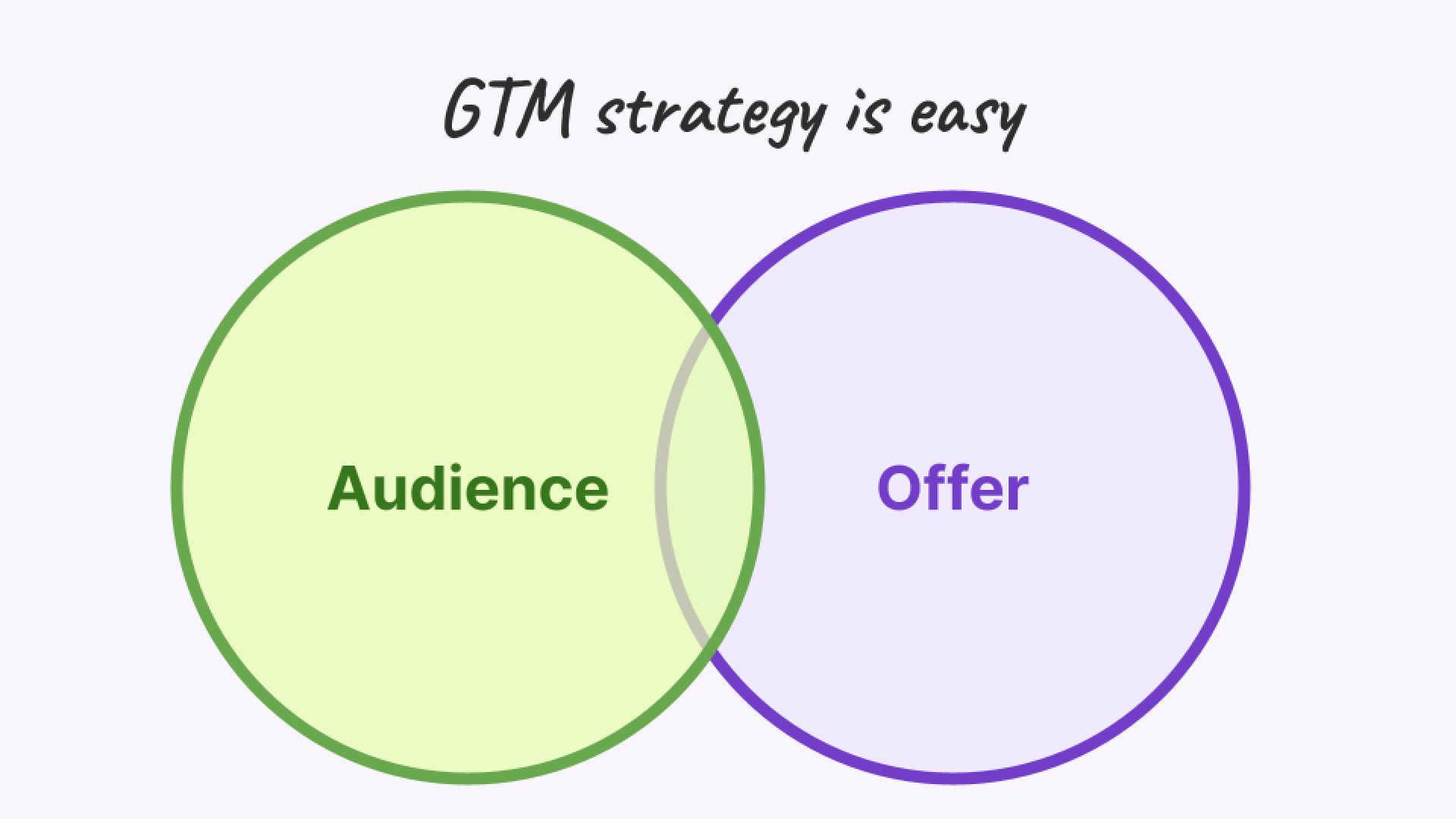
Signals help you define your audience and inform your offer.
Here are some examples to show you what I mean:
| Signal | Audience | Offer |
|---|---|---|
Ideal persona comments on a competitor’s LinkedIn post | Ideal persona showing interest in a product similar to yours | Send LinkedIn connection request and share customer quote explaining why that customer chose you over the competition |
Qualified account visits your terms of service page | Qualified account evaluating your security and compliance documentation | Send over security overview and processor list to vendor gatekeepers |
Former product user changes jobs | Former product user joining a new company that may fit your ideal customer profile | Send congratulations and provide a generous free trial offer |
Instead of basing your GTM strategy on static ideal customer profiles or vague intent data, you can dig deeper into your audience and provide personalized, relevant offers with full context.
Okay, now that we know what we’re trying to do, let’s talk about how we get it done.
Start with what you know
When you’re first beginning to identify signals, I recommend looking where the relevant data already exists: your sales funnel.
Once an initial meeting is booked with one of your sales reps, it kicks off the linear sales funnel. The goal is to document the different signals that precede this linear funnel path.
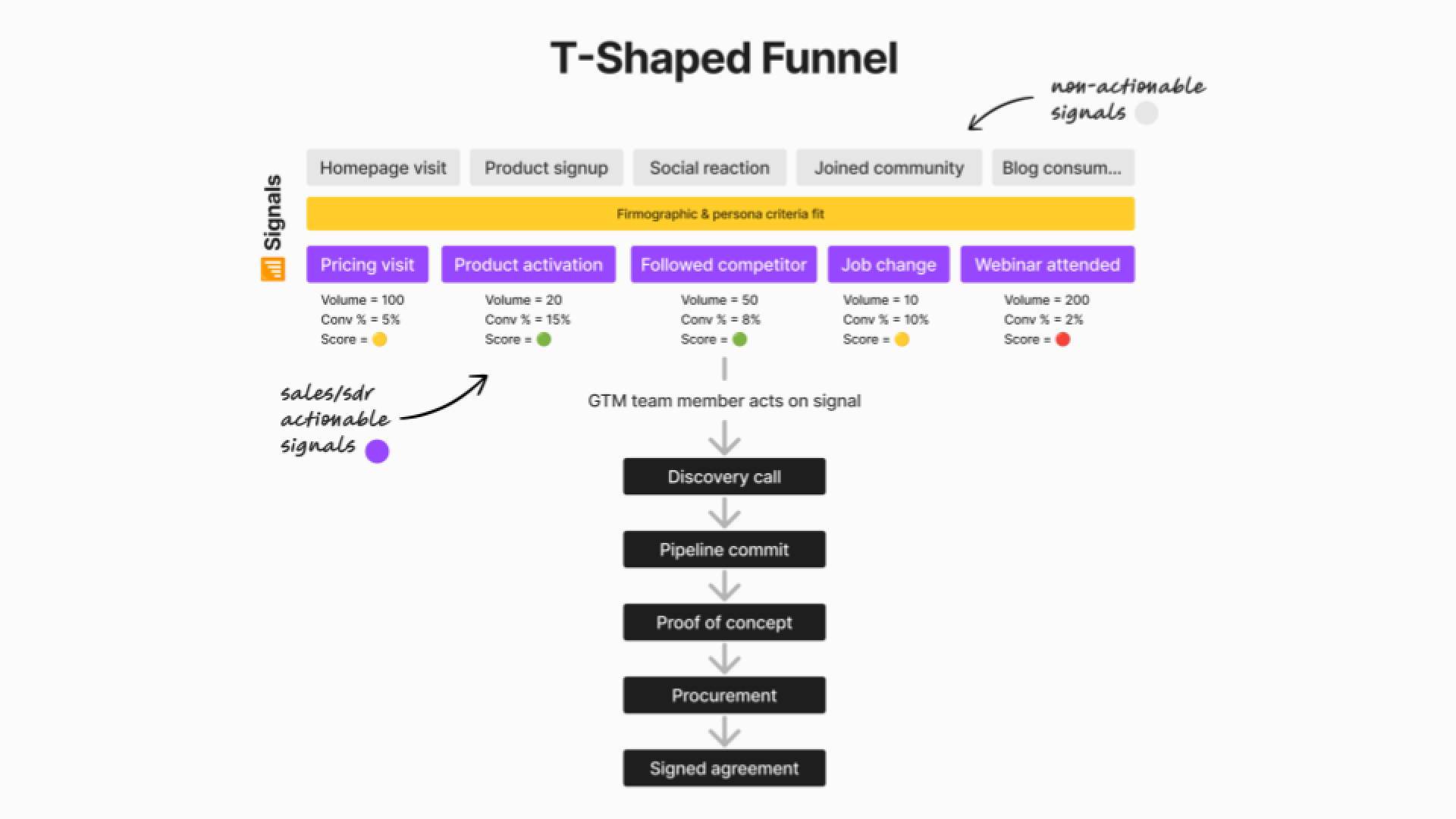
In other words, what was the action that triggered a meeting to be booked or a rep to start working a specific lead or account?
Check out our conversation with Practical Prospecting’s Jed Mahrle to learn more about how to apply inbound intel to outbound strategy:
Some signals are fairly straightforward, like a person visiting your pricing page or hitting a usage threshold during a free trial of your product. Others require more context, like a job change or a social engagement with a competitor.
Either way, you want to approach signals from both a quantitative and qualitative angle.
Conduct quantitative research (aka where should I focus?)
On the quantitative side, analyze:
- Volume
- Conversion rate
Quantitative research helps you prioritize your audience.
Once you know how often certain signals occur—and how strongly taking action on that signal correlates to someone booking a meeting—you can start assigning scores to separate high-priority signals from the rest.
Keep in mind, the higher the propensity to buy, the lower the volume of signal you'll probably see.
As a bonus, this research will help your marketing team better understand where to focus its time and energy to generate more high-converting signals on the inbound side.
Conduct qualitative research (aka what should I do?)
On the qualitative side, consider what the signal says about your buyers, their motivations, and how it relates to them booking an initial meeting.
Qualitative research will help you optimize your offer.
Signals don’t just tell you that someone is in-market—they can also tell you why.
You can do this by exploring what prospects were saying and doing across channels, going over call recordings or, even better, talking directly with prospects and new customers.
Making self-reported attribution part of your form sign-up flow can also go a long way toward giving you a sense of the paths prospects are taking to raise their hands and kick your tires.
How Notion runs go-to-market intelligentlyRead the case study to see how Notion automated signal-based plays to generate 30% more meetings per rep per month.
Think outside the CRM
Remember: There are tons of signals out there that you may not currently be tracking. We’ve put together a comprehensive list of signals you can use to inform your strategy here.
With so many signals to choose from, it can feel overwhelming. Luckily, odds are not every signal will apply to you. For instance, if you don’t have a product-led growth motion, you can probably cut out most product signals from consideration.
The goal isn’t to chase each and every signal. Some simply won’t be worth your time. Instead, you want to understand which signals occur with regularity and lead to meetings booked, which then follows a linear path of predictability to revenue.
Stack rank signals
Okay, after you’ve got about a dozen signals picked out, it’s time to get to work.
Focus on your best bets
Once you have a handle on volume and conversion rates for your signals, the next step is charting them out on a graph.
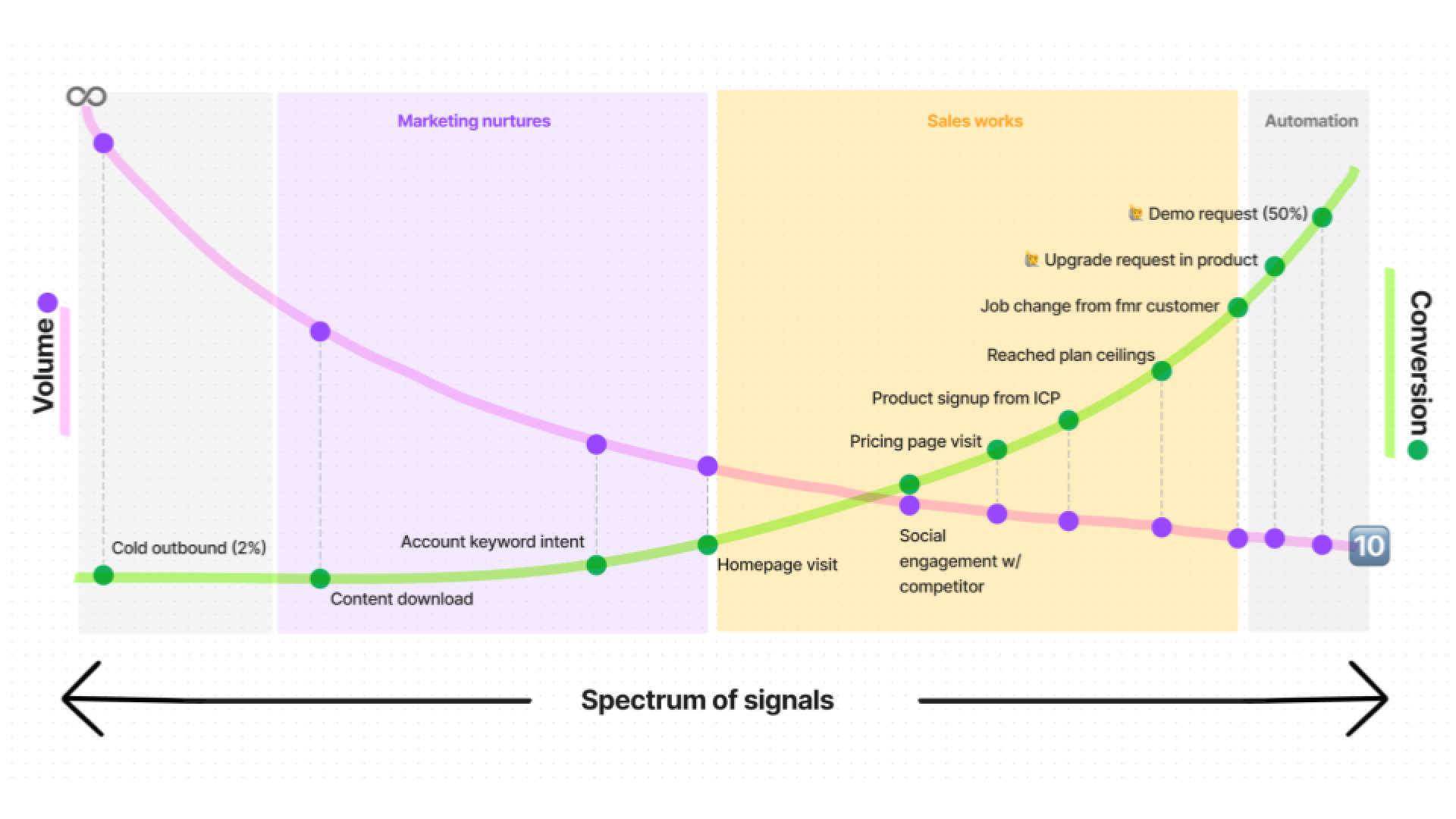
On one end of the graph, you’ll have high-volume, low-conversion signals, like content downloads. On the other end, you’ll have low-volume, high-conversion signals, like demo requests.
I recommend starting with the middle chunk that balances volume and conversion.

Most signals in this area will be worth your time, but it’s important to make sure you’re allocating your resources in the right places. “Do more with less” is the rallying cry of the day, after all.
How Zapier runs go-to-market intelligentlyRead the case study to see how Zapier used signals to identify and engage the right stakeholders at accounts to increase meetings booked by 31% in three months.
Know your unit economics
It’s worth coming up with a minimum viable conversion rate necessary to action on a signal. I put together a calculator you can use to do that here.
The goal is to understand what the conversion-to-meeting-booked rate would need to be in order for a rep to hit quota. That’s our signal actioning threshold. The bar you need to clear typically ends up being somewhere between 3-5%.
There’s only so much time in a day a rep can spend on pipe-generating activities. As such, our core constraint with this equation is the number of accounts or contacts a rep can genuinely sequence (and I use the word “genuinely” intentionally because it should require some thought and care) in a given time period.
Next, we’ll need the top-of-funnel targets of our GTM model. This is usually a pipeline number (e.g., $200K in pipe generated a month) or an opportunity quota (e.g., 8 stage-two opportunities generated a month). If you know your annual contract value or average initial pipe value, you can use it to calculate either with a little division or multiplication.
Because a meeting booked precedes the pipeline stage, you’ll also need to know your conversion rate from meeting booked to pipeline being locked in. That number generally hovers around 50% or more.
To know if a signal is worth actioning, we can assemble all the pieces of the puzzle with our inputs from above. It would look something like this:

And there you have it. If your signal-to-meeting-booked rate is below the magic number, then you either need to:
- Improve conversion to an acceptable rate
- Increase throughput to sequence more accounts or contacts per rep
- Avoid taking action on that signal
If your signal-to-meeting-booked rate is above the threshold, then all systems are go.
Now might be a good time to try generating even more of that signal through marketing or other programs.
Common Room makes signal capture a breeze
The success of signal-based GTM is predicated on your ability to track all relevant signals and identify the people and accounts behind them.
This is tedious, time-consuming, and seemingly impossible in some cases. That’s where Common Room comes in.
Digital signal capture
Our AI-powered customer intelligence platform allows you to auto-collect all first-, second-, and third-party signals from every corner of the internet via natively built and fully managed integrations with dozens of data sources—website, product, CRM, social, community, open-source, and more.
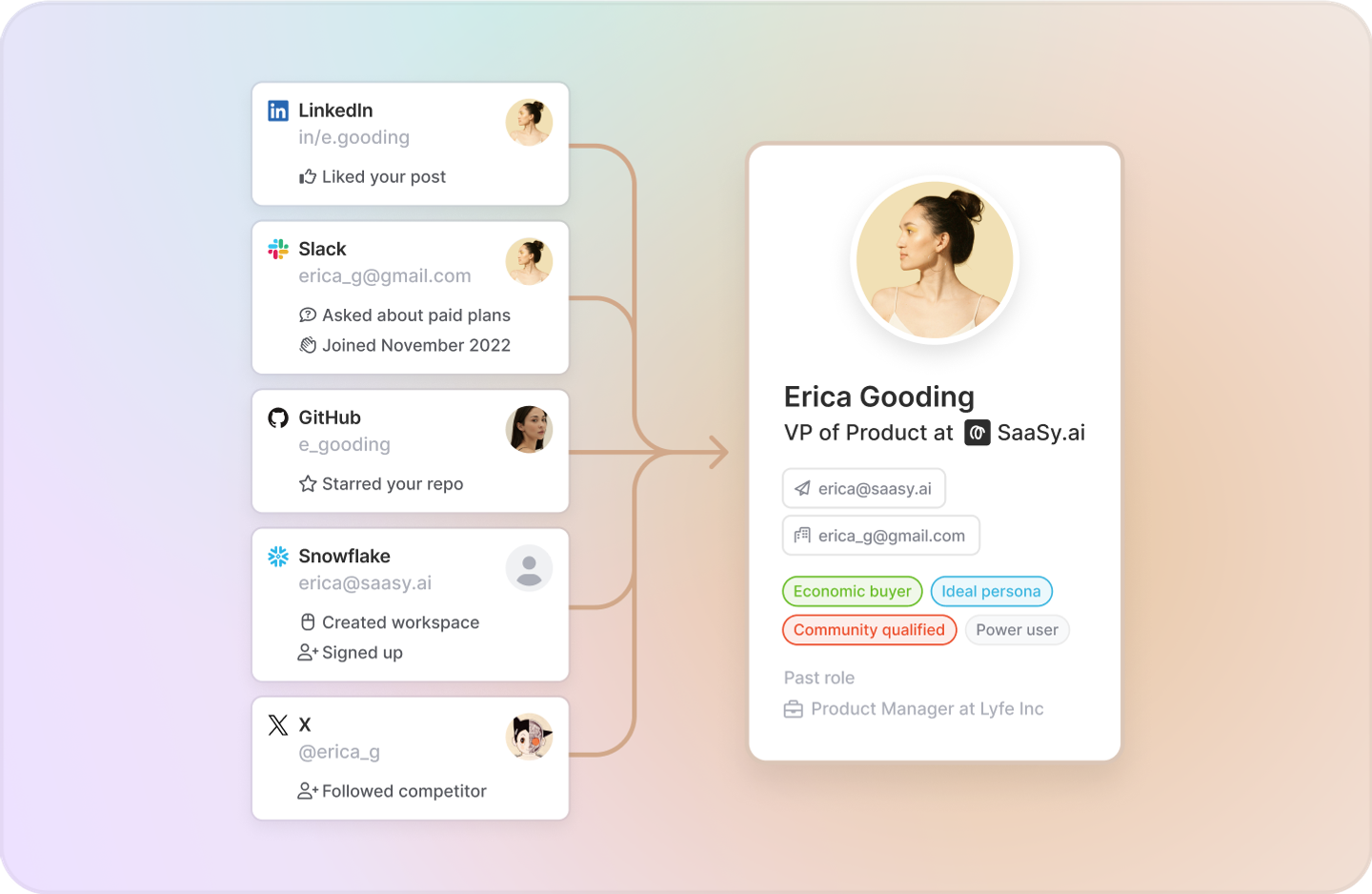
Unified identity and account intelligence
Signals are automatically deanonymized, enriched, and unified into a profile for every person and account via our Person360™ identity and waterfall enrichment engine, giving you full visibility into the people behind the signals and whether they’re the right fit.
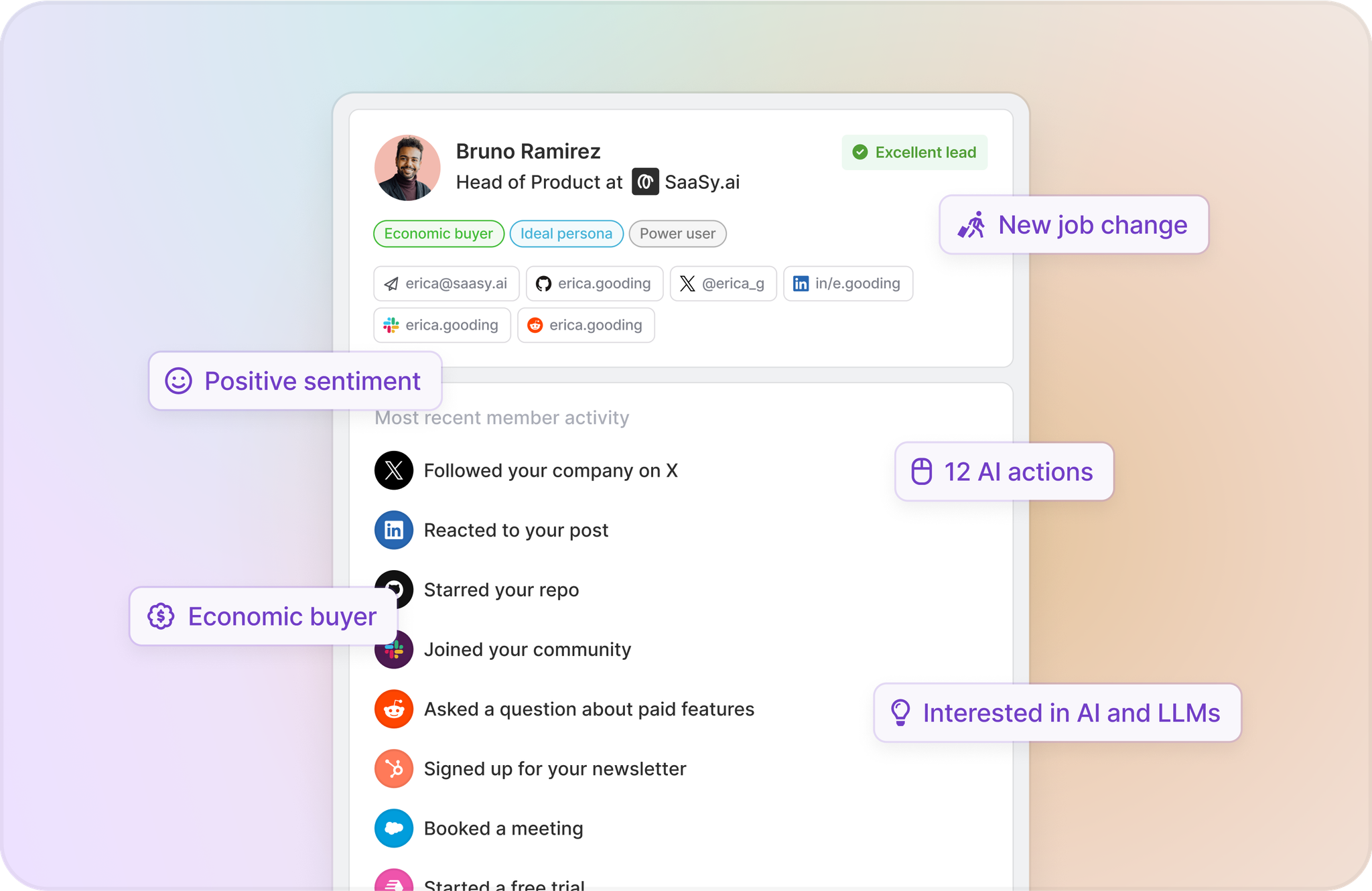
Actions and automation
AI-powered automations allow you to stay updated on contacts and accounts in real time, automatically segment prospects and add them to auto-replenishing burndown lists, get in touch with contacts at scale using customizable workflows connected to your sequencing tool, and more.
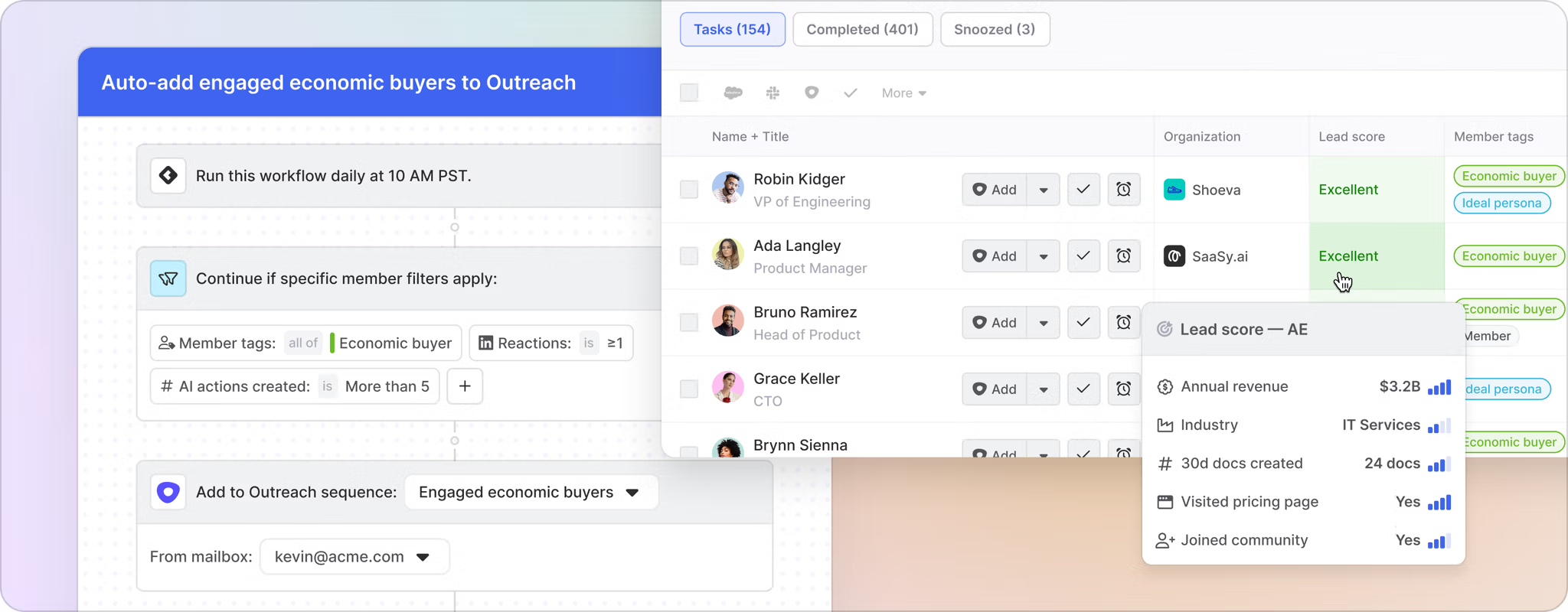
You can try it yourself for free.
Stay tuned for the next edition of Signal school.
Capture every buying signal with Common Room
Get started for free or get in touch to see how Common Room can help you find and follow up on every buying signal fast.
